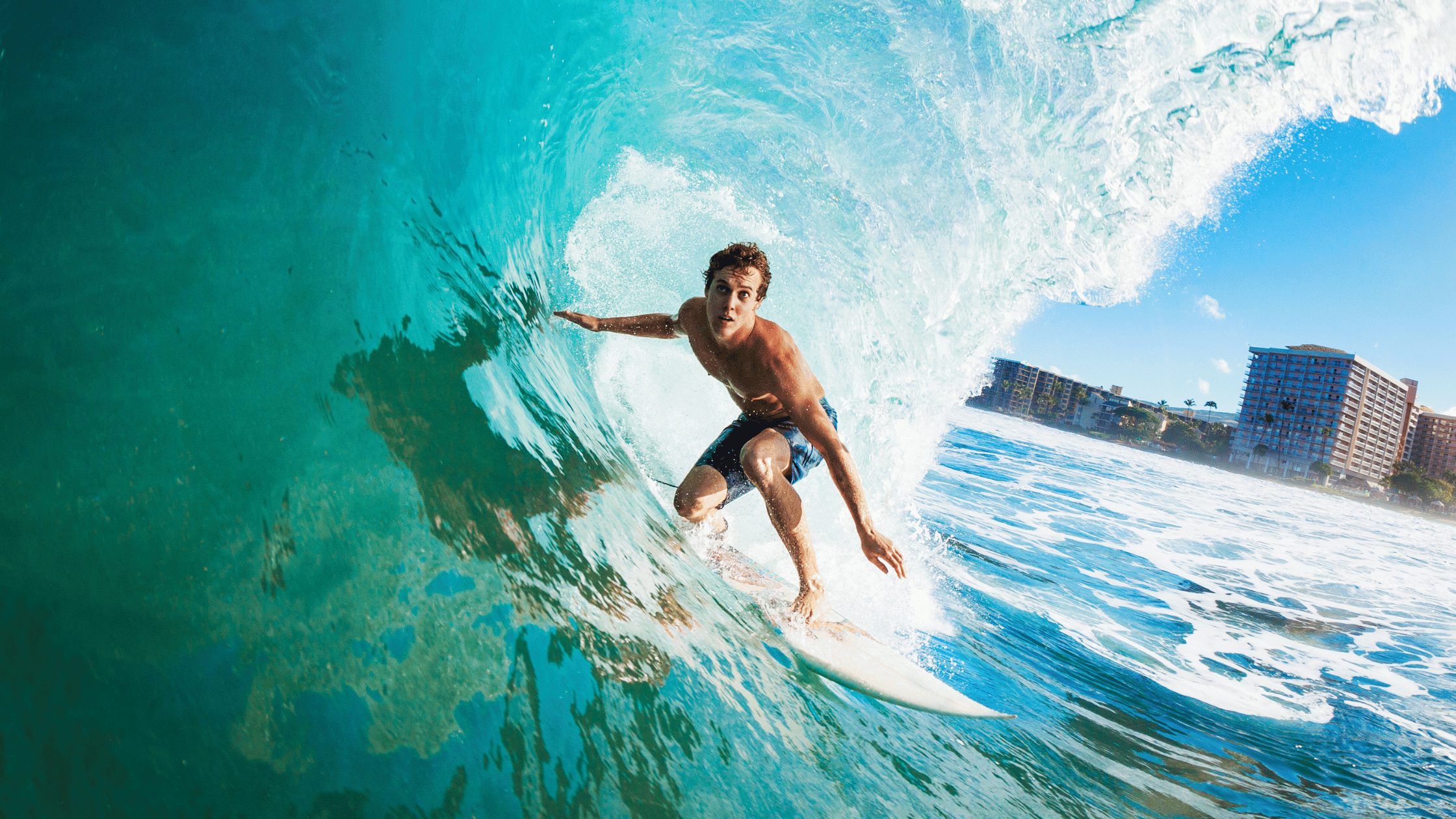Beginner’s Guide to Surfing as a Hobby: Tips and Essentials
Embarking on your surfing journey can be an exhilarating experience filled with learning and thrill. You’re stepping foot into a vibrant community of enthusiasts who find peace and excitement on the waves.
As a beginner, the right surfboard and understanding of core techniques are crucial to making your first ride both safe and enjoyable.
With the right guidance, your new hobby can quickly become a lifelong passion.
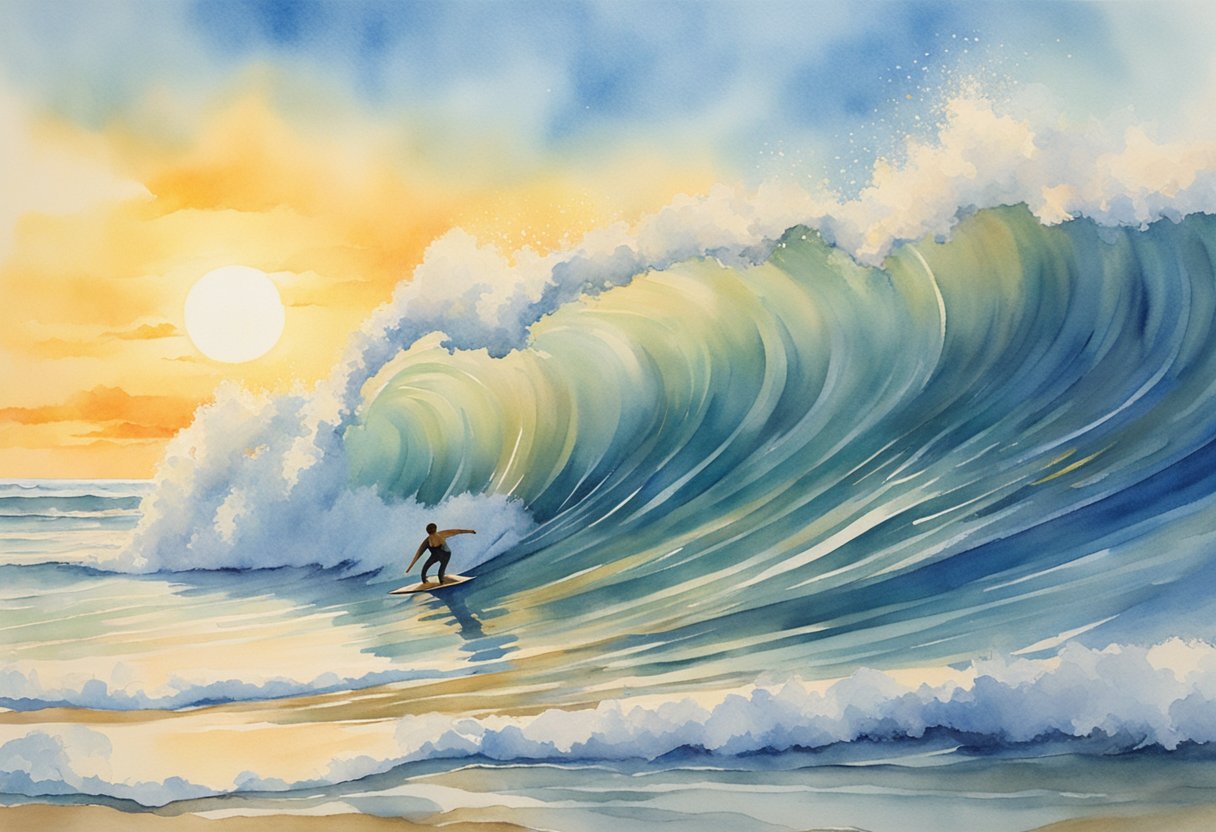
Learning how to surf requires not just physical skill but also a deep appreciation of ocean dynamics and safety.
Choosing beginner-friendly spots and understanding surf etiquette ensures you and those around you have a rewarding experience.
Over time, you’ll become more adept at reading waves and positioning yourself correctly—a skill that comes with consistent practice.
Your journey will also include investing in essential gear, gaining knowledge of water safety, and engaging with other surfers who can offer valuable insights.
These elements collectively contribute to enhancing your surfing capability.
Soon, you’ll see significant progress, not only in your technique but also in your connection to the surfing lifestyle.
Key Takeaways
- Start with the right surfboard and gear for beginners.
- Learn wave reading, water safety, and surf etiquette.
- Engage with the surfing community and improve over time.
Choosing the Right Surfboard

Selecting the right surfboard is essential for a beginner looking to maximize enjoyment and learning. Stability, safety, and ease of use are key factors to consider.
You will find that certain surfboard types, especially soft-top longboards, are particularly suited for those just starting out.
Understanding Surfboard Types
As a beginner, choosing a surfboard can be overwhelming due to the variety of options.
Key characteristics to understand include length, width, thickness, and volume.
Longer and wider boards with more volume offer increased stability, crucial for your learning phase.
These boards make catching waves easier and help you maintain balance.
There are different types designed for various skill levels. For novices, boards with ample surface area provide the advantage of more forgiving handling and better flotation.
Soft-Top Longboards for Beginners
Soft-top longboards are ideal for beginners due to their user-friendly design and emphasis on safety.
These boards feature a soft foam deck that cushions impacts, reducing the risk of injury.
Their significant length and width promote stability, offering a forgiving platform for mastering the basics of surfing.
The soft-top material can withstand minor impacts better than hardboards, making it a durable choice for learning.
With their buoyant design, soft-top longboards enable you to paddle and stand up more easily, facilitating a quicker progression in surfing skills.
Surfing Essentials and Gear
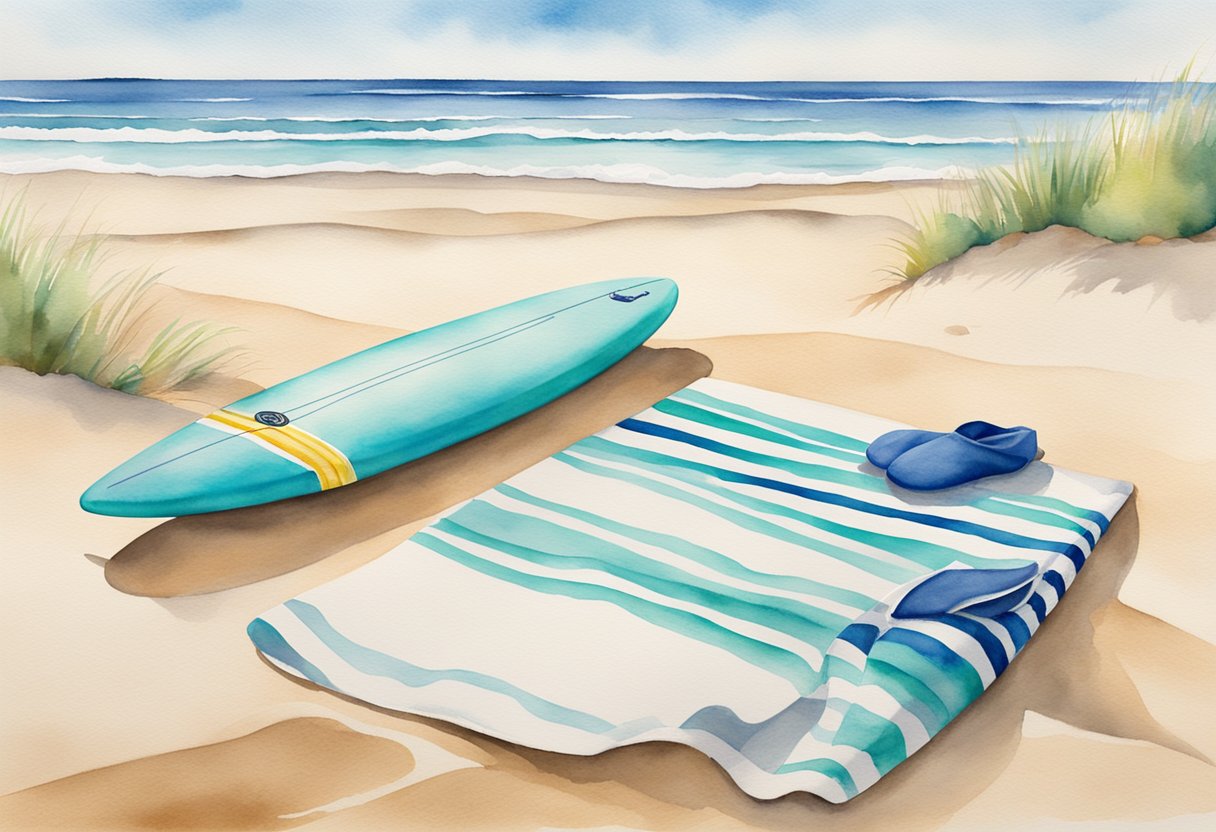
When starting surfing, understanding your gear is key to a good experience. You’ll need a quality wetsuit for warmth and protection. The right leash and wax ensure performance and safety on the waves.
The Importance of a Good Wetsuit
A good wetsuit is essential for maintaining body temperature in the water.
Made from neoprene, it provides insulation, allowing you to surf in various conditions.
The thickness of the wetsuit should match the water temperature, with thicker options for colder waters.
A proper fit is important; too tight could restrict movement, while too loose will let cold water in.
Consider investing in a rash guard worn under your wetsuit. It offers an additional layer of comfort and protects against chafing.
Wetsuits come in different types, such as full suits and spring suits, catering to different climates.
Prioritize quality to ensure durability and protection.
Choosing the Right Leash and Wax
The leash keeps your board attached, preventing it from drifting away.
Beginners should choose a leash about the same length as their board. A thicker leash is more durable and ideal for beginners practicing in moderate conditions.
Regularly check for wear and replace if necessary to avoid unexpected breakages.
Surf wax is applied to improve grip on the board. It prevents slipping and enhances balance.
Choose your wax based on water temperature—cold-water wax for cooler environments and warm-water wax for tropical settings.
Apply the wax in a crisscross pattern to ensure good coverage.
Regular maintenance is necessary, so reapply as needed to maintain an effective grip.
Fundamentals of Surfing Technique
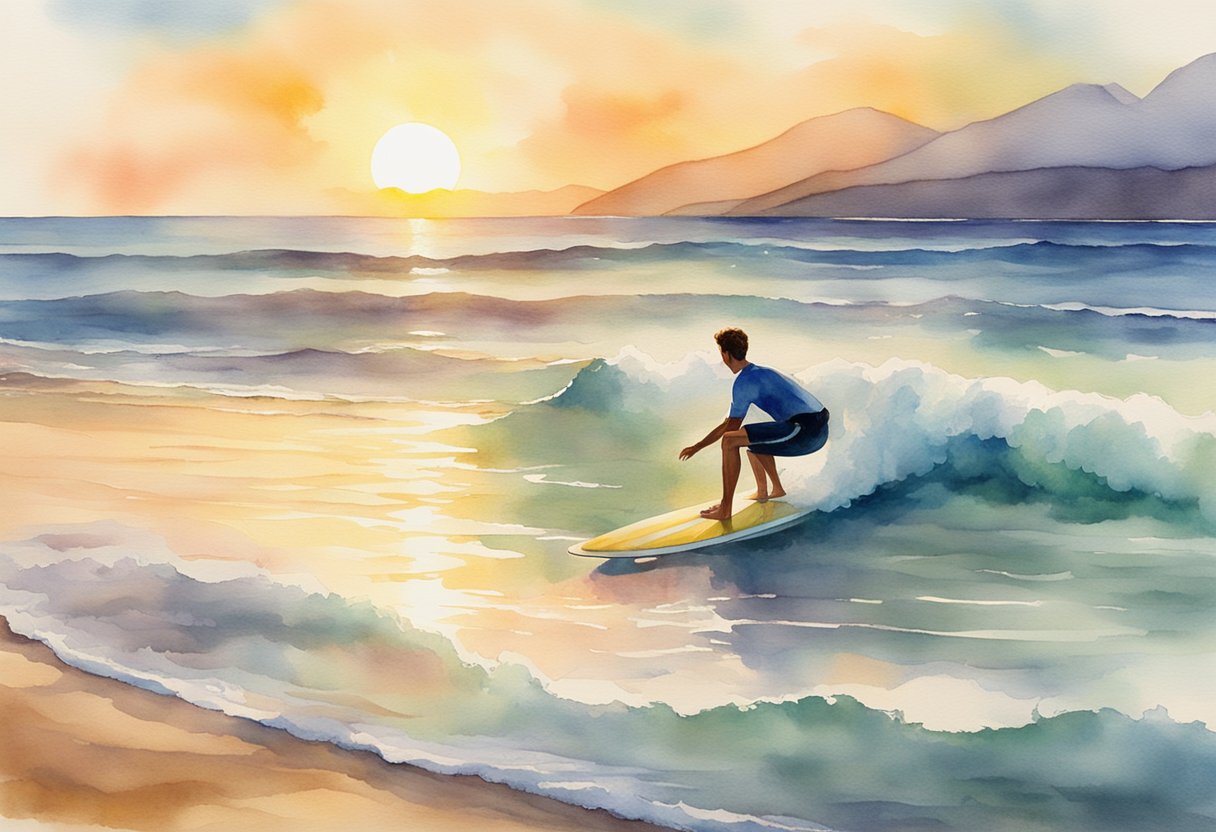
To get started with surfing as a hobby, focusing on the fundamentals of your technique is crucial. Essential skills include a fluid pop-up to get you standing on your board and efficient paddling to navigate the waves with ease.
Mastering the Pop-Up
The pop-up is a critical moment that transitions you from lying on your board to standing up.
Start by lying flat on your stomach with your hands placed beneath your shoulders.
As you push up, use your arms to lift your chest smoothly. Your hips should follow, similar to a push-up motion.
Keep your back straight and slide your feet into position.
Your front foot should land near the center of the board, while your back foot stays towards the tail.
Practice consistently on the sand to build muscle memory before hitting the water.
Center your weight evenly over the board, with your knees bent slightly for balance.
Focus on staying low and maintaining a stable stance. This initial form sets the foundation for accurate balance and control.
Perfecting Your Paddling
Effective paddling is essential for catching waves and moving through the surf zone.
Start with your chest up and your head facing forward. Your body should remain aligned with the center of the board.
Engage your core muscles as you paddle, alternating arms in a scooping motion.
Keep your fingers together and pull the water toward your body to maximize propulsion.
A well-timed paddle gets you into position when a wave approaches.
Focus on entering and exiting the water cleanly with your hands, reducing drag.
Efficient paddling technique conserves energy and allows you to surf longer without fatigue.
Regular practice on flat water can help enhance this skill, contributing to an overall smoother surfing experience.
Water Safety for Surfers
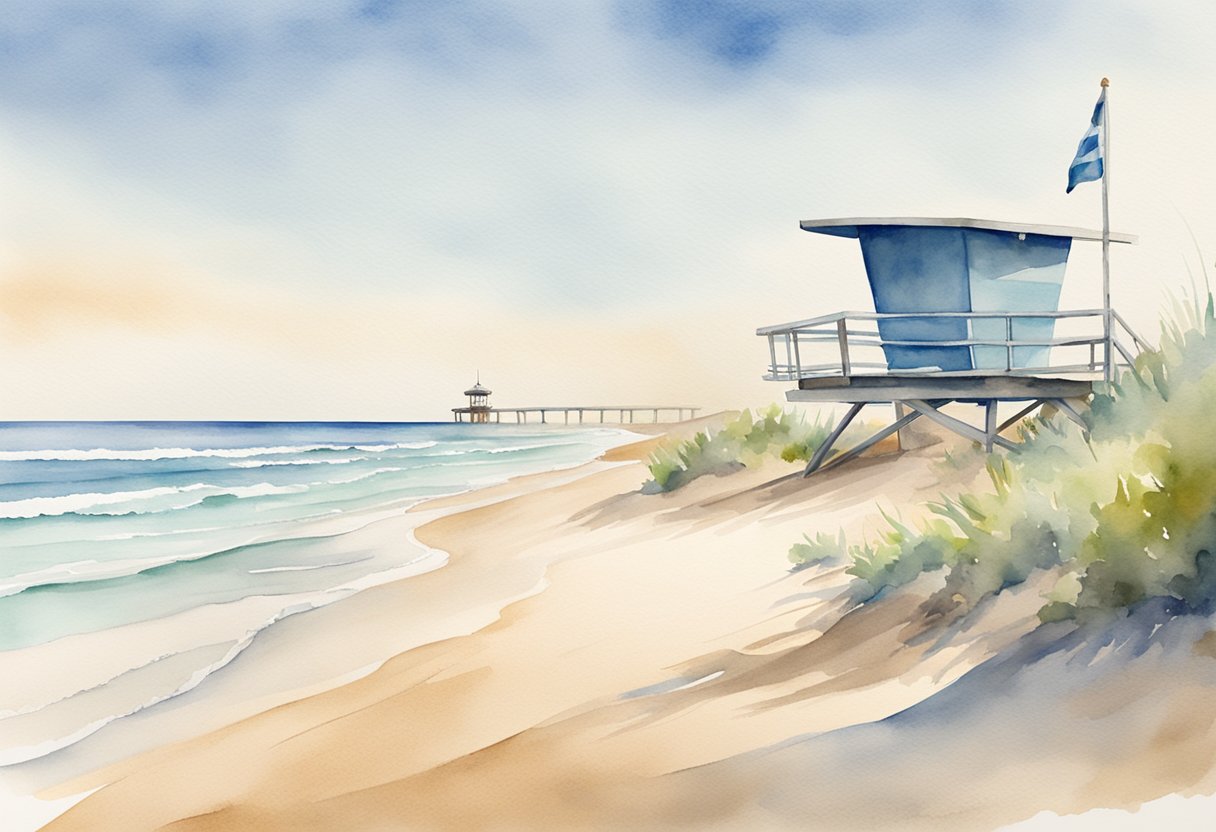
Ensuring your safety while surfing requires an awareness of the environment and adherence to best practices. Knowledge of rip currents and maintaining safe habits in the water are essential components of surfing safely.
Understanding Rip Currents
Rip currents are powerful, narrow channels of fast-moving water. They are responsible for many water rescues and incidents.
Recognizing them is vital for all surfers.
Clear indicators of rip currents include choppy waves, a line of debris moving seaward, and a distinct color change in the water.
If caught in a rip current, remain calm and save energy.
Do not fight against it by swimming directly back to shore.
Instead, swim parallel to the shore until you are out of the current, and then return to the beach at an angle.
Practicing this escape method in safe conditions can reinforce your confidence and prepare you for real situations.
Safe Surfing Practices
Before heading out, check the local weather and surf conditions. Equip yourself with a leash and a well-maintained board.
Always surf with a buddy or ensure there are others around for an added layer of safety.
Understanding surf etiquette is crucial—avoid crowding and respect others’ right of way.
Beginners should opt for beaches with lifeguards and waves that match their skill level.
Hydration is often overlooked, but staying hydrated is important as the sun and physical exertion can quickly deplete your body’s fluids.
Regularly practice paddling and swimming drills, which not only boost fitness but also enhance confidence in the water.
Prioritize educating yourself continuously on surfing safety and remain vigilant about your surroundings.
Reading and Selecting Waves

Gaining the ability to read ocean waves is crucial for any beginner surfer. Understanding which waves to target and how to time your moves can improve your success in catching waves.
Identifying Surfable Waves
When starting, you’ll want to focus on waves that are more predictable and manageable.
Look for waves with a gently sloping face, as these tend to break slowly and offer you enough time to pop up on your board.
Pay attention to the wave’s shape; those with a uniform crest are typically more surfable. A steeper wave may be tempting, but it requires more skill and experience.
Another tip is to observe the wave period, which is the time between two consecutive crests.
Longer periods often mean more powerful and organized waves, suitable for advancing your surfing skills.
Additionally, keep an eye on whitewater, which indicates areas where the wave has already broken.
Timing Your Entry and Exit
Timing is key when you’re out to catch a wave. You need to time your paddle with the wave’s approach.
Start paddling when you see the swell forming at a distance, maintaining a steady pace to ensure you’re in the right position.
As the wave comes closer, increase your paddling speed to match its momentum. This helps you efficiently catch the wave as it lifts you.
Knowing when to exit is just as important.
If you find yourself in the wrong position or the wave isn’t forming as expected, it’s best to pull back early. This saves energy and allows you to reposition for another wave.
Once you’ve successfully caught a wave, aim for a smooth slide into the whitewater, which assists in reducing impact as you end your ride.
Etiquette and Respect in the Lineup
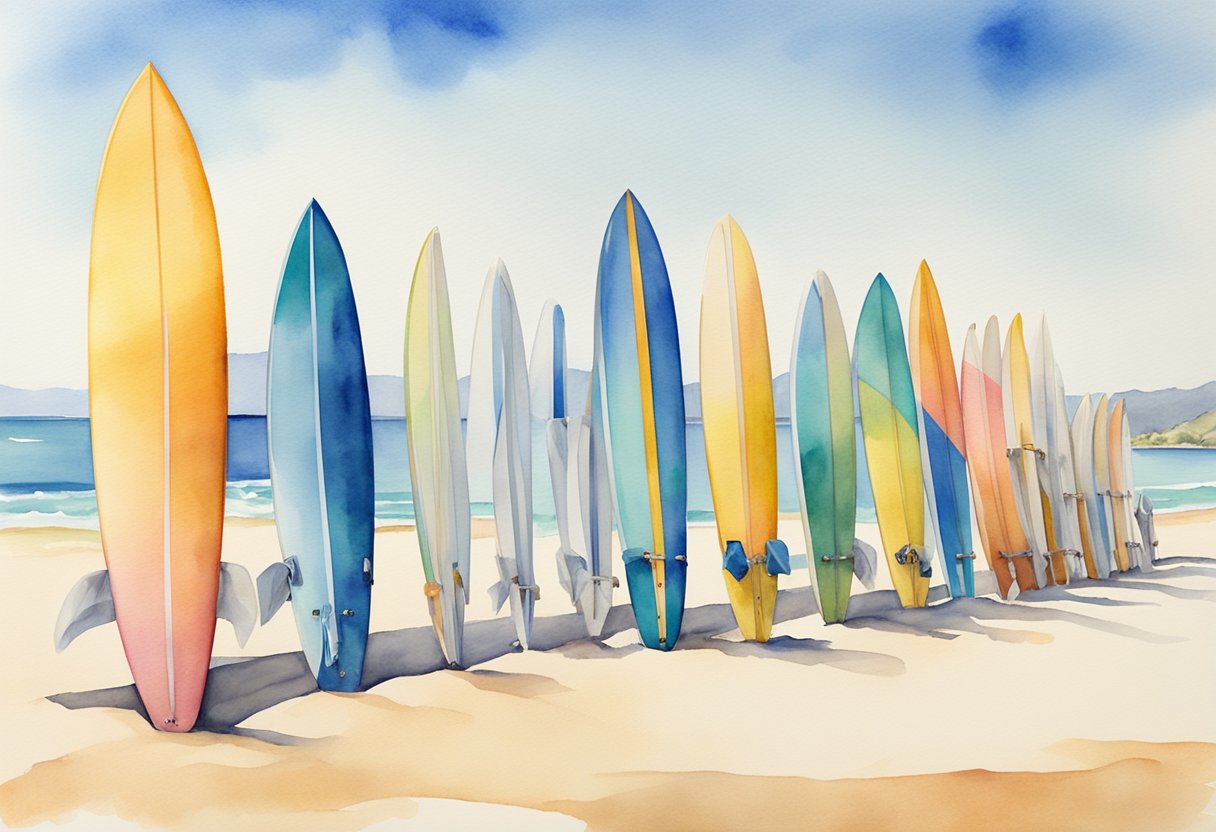
Understanding surf etiquette is crucial for maintaining harmony in the water. Respect for others ensures everyone enjoys their time and stays safe.
As a beginner, observing and following these unspoken rules will help you integrate smoothly with more experienced surfers.
- Give Priority: The surfer closest to the peak of the wave has priority. Yield to them to prevent collisions and misunderstandings.
- Don’t Drop In: Dropping in on someone else’s wave is a big no-no. Wait for your turn to ensure everyone has a good experience.
Pay attention to where you position yourself in the lineup.
While it’s tempting to stay at the front, it’s important to let experienced surfers have the best spots.
As a beginner, staying slightly off to the side allows you to practice without disrupting others.
If you find yourself in the path of an oncoming surfer, make sure to stay out of the way.
Paddle towards the white water or shoulder of the wave. This helps prevent accidents and keeps the lineup flowing smoothly.
Be patient and courteous. Observing how other surfers interact can be educational.
Do not be afraid to ask for advice. Most experienced surfers appreciate respectful inquiries and are willing to help you learn.
Observing surf etiquette builds respect among surfers and contributes to a fun and inclusive surfing environment.
For more information, you can read about surf etiquette from this source.
Finding the Right Surf Spots
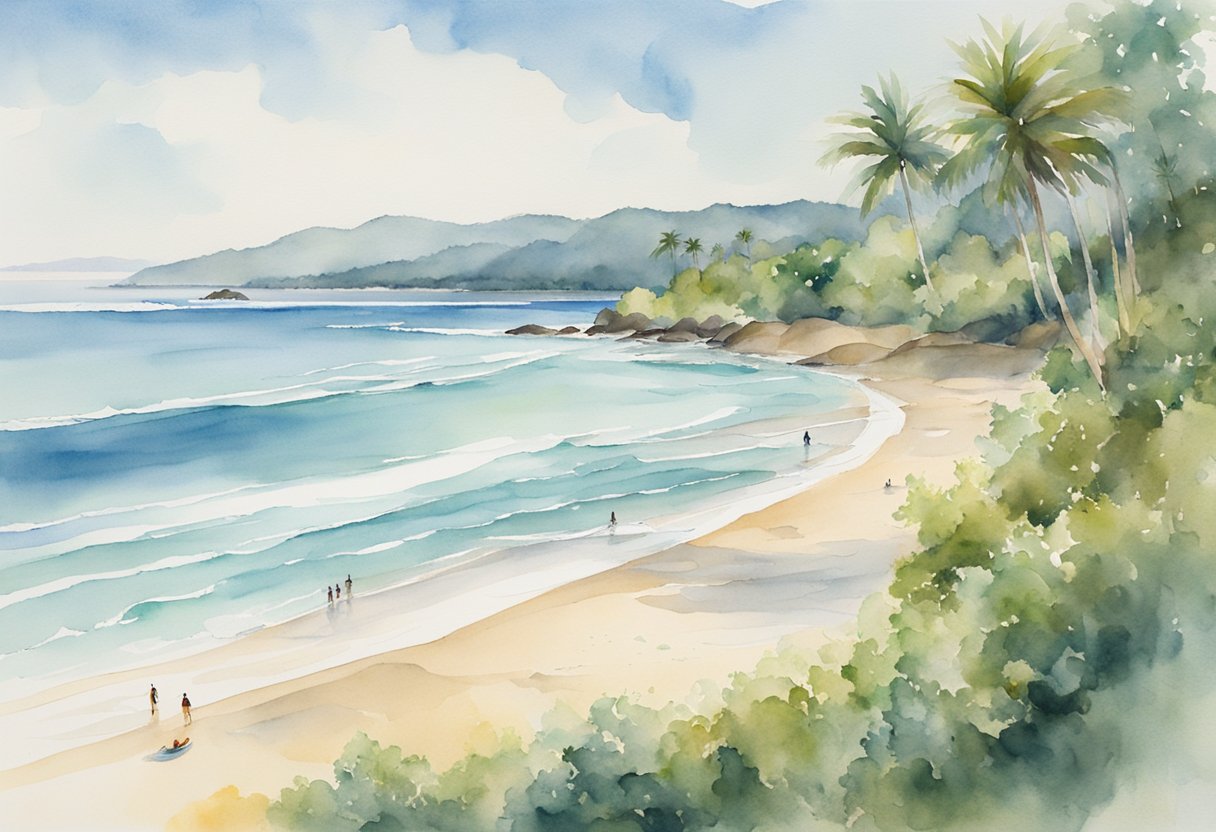
Selecting the right surf spot is essential for beginners.
Key considerations include the nature of the beach, wave conditions, and the best times to visit.
You’ll benefit from places that offer gentle and predictable waves, allowing you to develop skills in a safe setting.
Beginner-Friendly Beaches
When starting, it’s crucial to opt for beaches that cater specifically to novice surfers.
Look for locations with sand bottoms, which can be more forgiving if you fall.
Additionally, beaches with small, consistent waves are ideal.
These conditions help you gain confidence and practice basic techniques without the intimidation of large, powerful waves.
Consider spots like Waikiki in Hawaii or Bondi Beach in Australia, known for their welcoming surf environments.
In these places, waves break gradually, providing an excellent platform for learning the basics.
It’s also important to ensure the beach doesn’t have strong rip currents or other hazards, making it safer for you to enjoy your new hobby.
When to Visit Popular Surf Locations
Timing your visits is as important as the location itself.
Off-peak seasons are usually the best times to practice, as these periods feature less crowded beaches, allowing you more space to navigate the surf without pressure.
Additionally, local weather patterns can influence wave conditions greatly.
Mornings are often favored due to calmer winds and fewer people.
Check local surf forecasts to find out when conditions are most suitable for beginners.
It’s worthwhile to research specific beaches to know the optimal times for beginner-friendly waves.
Spot guides like those on Rapture Camps can provide insights on such details.
Physical Conditioning for Surfers
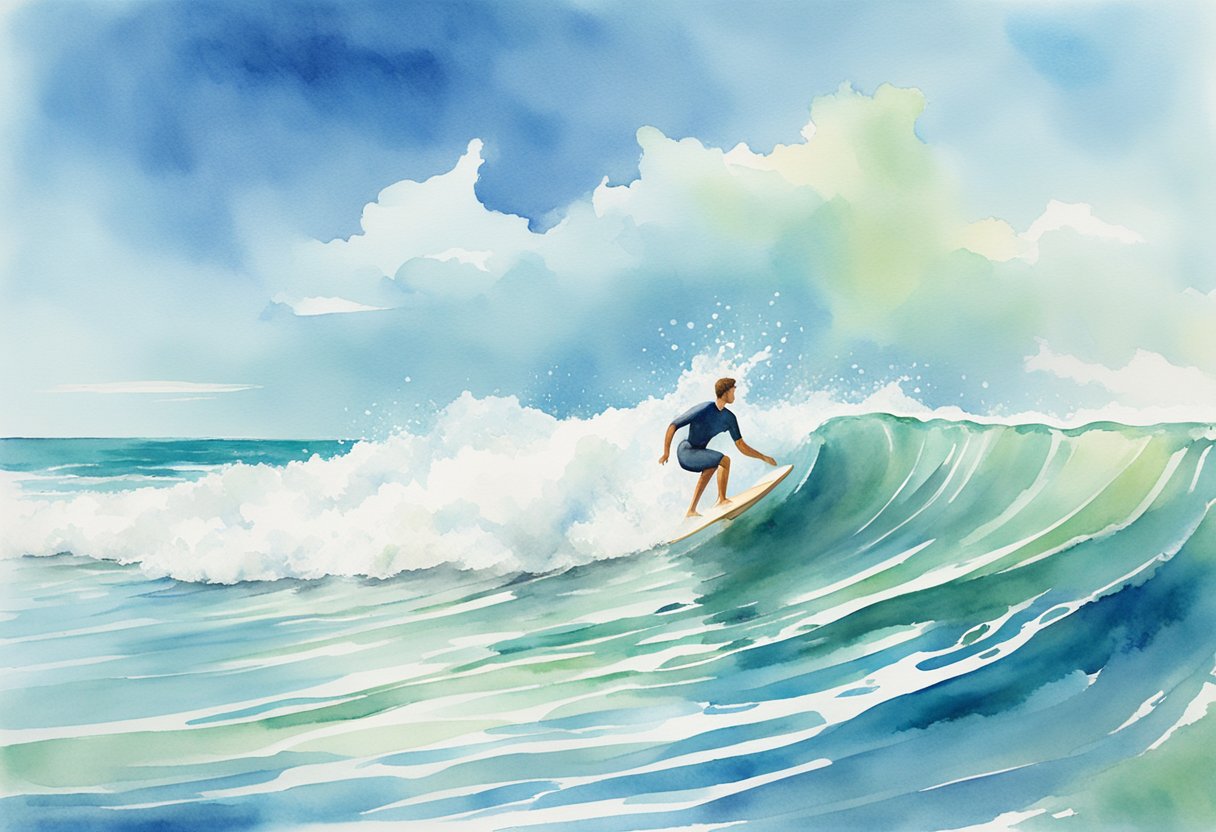
Effective physical conditioning plays a crucial role in enhancing your surfing experience.
Developing core strength, balance, endurance, and flexibility is essential for maintaining stability and maneuverability on the board.
These elements are fundamental in navigating waves efficiently and reducing injury risk.
Exercises for Core Strength and Balance
Focusing on your core strength and balance can significantly improve your surfing skills.
Planks and Russian twists are highly effective exercises.
Plank variations such as side planks help strengthen your obliques, which support balance.
Russian twists target your abdominal muscles, enhancing stability during dynamic maneuvers.
Balance board exercises can also be beneficial.
They simulate the wobble of a surfboard, improving your coordination and reaction time.
Incorporating yoga poses like the tree pose can further enhance your balance by challenging your stability.
Improving Endurance and Flexibility
Building endurance is key for long surfing sessions.
Swimming laps is an excellent cardio workout for surfers, mimicking paddling movements and increasing lung capacity.
Running and cycling are also effective for improving cardiovascular endurance, allowing you to paddle longer and catch more waves.
Flexibility is crucial for agility and reducing injury.
Practice dynamic stretching to increase range of motion.
Hamstring stretches and hip flexor stretches aid in maintaining fluid movements while transitioning on the board.
Yoga complements flexibility training by improving both flexibility and core control, which supports better maneuverability during surfing.
Progressing as a Surfer

Improvement comes from setting specific goals and recognizing key moments in your journey. Understand important milestones and stay motivated to overcome challenges.
Key Benchmarks in Your Surfing Journey
At the start, successfully standing up on your board is an essential milestone.
As you learn to surf, progress by catching smaller waves independently without assistance.
Achieving this skill helps build confidence and mastery over the basics.
Next, work on paddling efficiently. This technique is crucial for positioning yourself correctly and making use of wave energy.
Progress further by taking on medium-sized waves, which will enhance your balance and control.
Setting Goals and Overcoming Challenges
Establish clear goals like improving your paddling speed or perfecting your pop-up technique.
Regularly practicing these goals helps cement your skills and measure progress in tangible ways.
Setbacks are inevitable, but viewing them as learning opportunities aids in overcoming challenges.
Embrace surfing tips from more experienced surfers and seek feedback to identify areas for enhancement.
Perseverance is key.
Celebrate small victories to maintain enthusiasm.
Surround yourself with a supportive surf community that encourages you during difficult times.
Engaging with the Surfing Community
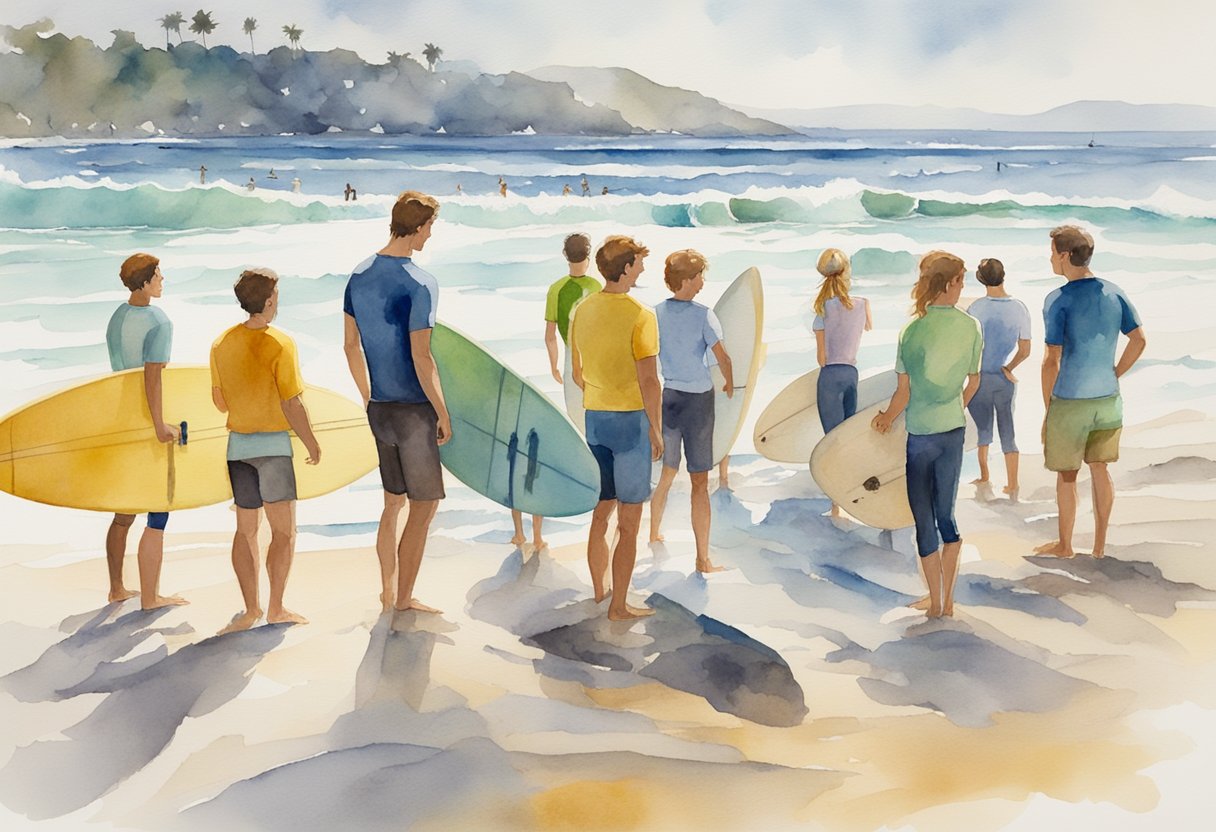
Connecting with the surfing community is vital to enhance your experience as a beginner.
Join a local surf school where you can take structured surf lessons to build your skills.
This environment provides opportunities to meet fellow beginners and experienced surfers willing to share their knowledge.
Participate in local surfing events or competitions for a deeper involvement. Many of these gatherings welcome and encourage beginners.
They are excellent places to learn about surf culture and make connections with other surfers.
Take advantage of online communities and forums where surfers gather to discuss tips, share experiences, and plan meetups.
Websites like surf clubs’ pages or social media groups can be valuable resources for advice and support.
Being part of the surfing community also involves understanding surf etiquette.
This respect for fellow surfers ensures everyone’s safety and enjoyment of the waves.
Recognize priority rules, acknowledge signals, and be aware of your surroundings.
Engage actively with experienced surfers during your practice sessions.
Many are eager to provide advice and help you improve. Listening to their tips during and after your surf lessons can significantly speed up your progress.
Consider volunteering for beach clean-ups or surf-related community projects.
These activities not only contribute positively to the environment but also strengthen bonds within the community, highlighting the interconnectedness of all who appreciate the ocean’s beauty.
Frequently Asked Questions
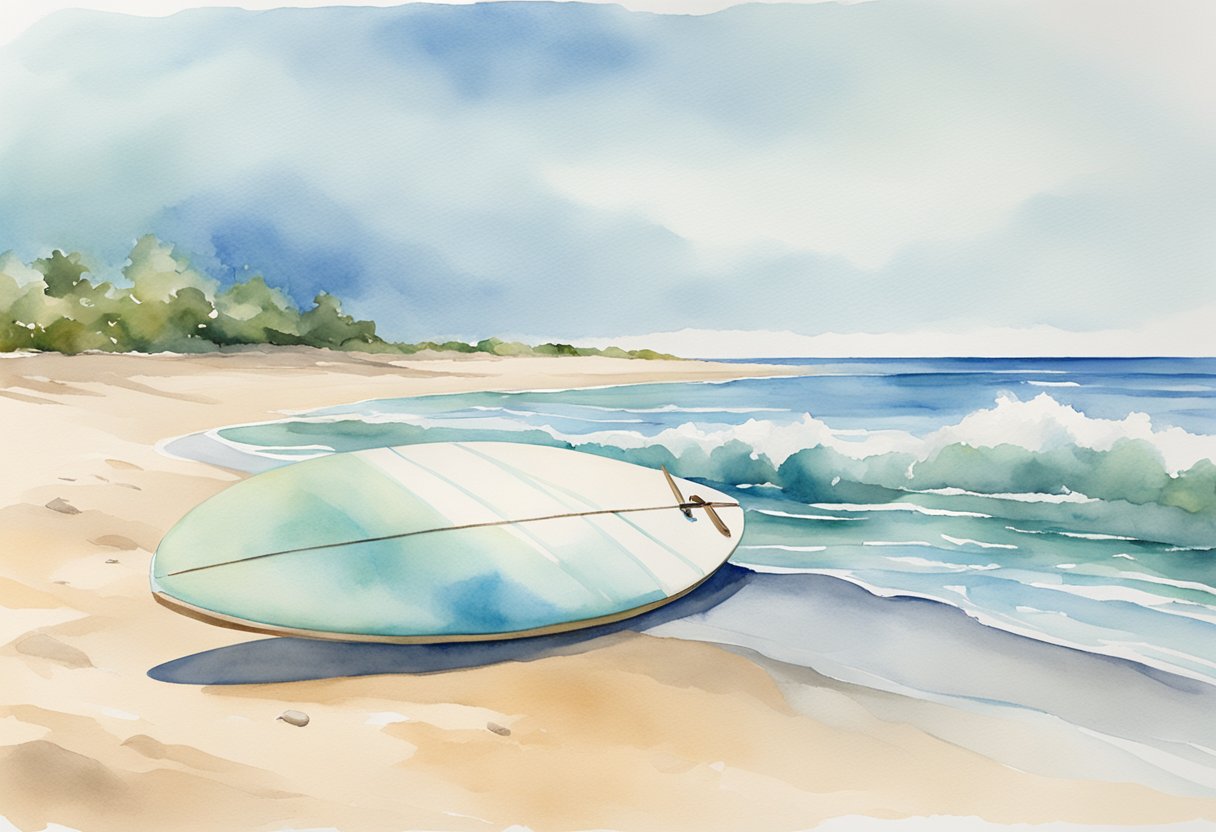
Starting surfing can be an exciting journey that requires knowledge about equipment, techniques, and etiquette. Understanding these basics will help you navigate the early stages of your surfing experience with confidence.
What are the essential tips for a beginner surfer to get started?
Begin your surfing journey at a beginner-friendly spot with smaller waves.
This environment helps you gain experience without facing overwhelming conditions.
Practice paddling and standing up on the board in a controlled setting, like a pool or on dry land, to build confidence before hitting the waves.
What type of surfboard is best suited for someone new to surfing?
For beginners, a larger, foam longboard is recommended.
This type of board offers more stability and buoyancy, making it easier to catch waves and maintain balance.
As you progress, you can explore different board types that suit your style and skill level.
How can someone teach themselves to surf?
Practice on land to master the pop-up technique, which involves transitioning from lying down to standing on the board.
Watching instructional videos and reading guides can provide valuable insights.
A helpful resource is the How To Practice Surfing At Home guide.
Is there an age limit to start learning how to surf?
Surfing is a sport accessible to people of all ages.
While young children can start with parental guidance and lessons, adults and even seniors can learn with proper instruction and safety precautions.
Focus on skill development and personal comfort in the water.
What are the basic rules of surfing etiquette every beginner should know?
Respecting other surfers is crucial.
Always wait your turn, avoid “dropping in” on another surfer’s wave, and practice clear communication to prevent collisions.
Choose surf spots suitable for your experience level to reduce conflicts and enhance safety.
Where can I find resources or videos to help me learn surfing as a beginner?
Online tutorials and guides provide various insights for beginners.
For step-by-step instructions, the guide on How to Surf is comprehensive and includes expert advice.
Local surf schools also offer personalized lessons tailored to beginners.

